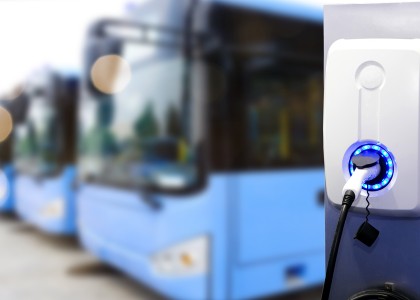ACEEE research shows that energy efficiency is the most viable near-term strategy for moderating natural gas prices, and is also vital to stabilizing longer-term gas markets. Our testimony first discusses the roots of the current situation, assesses the potential impact of energy efficiency on wholesale natural gas prices, and points out the limits of supply-side solutions. It then focuses on ACEEE’s recent analysis, which shows that if we can reduce gas demand by as little as 4% over the next five years, we can reduce wholesale natural gas prices more than 20%. These savings would put over $100 billion back into the U.S. economy, at a cost of $30 billion in new investment, of which $7 billion would be public funds.
Moreover, this investment would help bring back U.S. manufacturing jobs that have been lost to high gas prices, and would help relieve the crushing burden of natural gas costs experienced by many lower-income households. In addition, the efficiency investments generated by this policy scenario would create two to five times as many jobs as a comparable level of investment in energy supply options. Interestingly, most of the gas savings in our analysis come from electricity efficiency measures, because so much electricity is generated by natural gas, often inefficiently.
Federal and state governments current spend over $2.5 billion annually on energy efficiency, in research, development, deployment, and other programs. The 5-year, $7 billion public investment we recommend would average $1.4 billion annually, and would represent a 56% increase in public commitment to efficiency. Given the benefits—a 20%-plus drop in natural gas prices, more than $100 billion in direct economic benefits, and thousands of new jobs, an aggressive federal and state energy efficiency and conservation effort over the next five years is perhaps the best investment we could make in the American economy.
ACEEE’s recommendations for near term action include:
- 1. Increase funding for efficiency deployment programs. We recommend Congress increase FY 2005 appropriations for federal programs that deliver energy savings to consumers, including the Energy Star programs, the Weatherization program, and DOE’s suite of other deployment programs, and that the Administration follow suit in its FY 2006 budget request.
- 2. Expand public benefits funds for efficiency. 18 states collectively spend over $1 Billion on public benefits efficiency programs funded through utility bill fees. Other states, and Congress, should follow this example, and states with current programs should increase funding levels.
- 3. Create tax incentives for high-efficiency technologies. Congress should pass incentives for energy efficiency technologies immediately, using the FSC-ETI tax bill or other mechanisms.
- 4. Conduct a national efficiency and conservation campaign. DOE should lead a partnership effort among efficiency manufacturers, farm organizations, utilities, states, and others to accelerate efficiency practices and investments and encourage short-term behavior modifications.
Recommendations for longer-term action include:
- 1. Accelerate federal efficiency standards. DOE should accelerate its standards rulemakings for residential heating equipment and commercial air conditioning equipment, and should take current gas price trends and supply issues into account in setting these standards.
- 2. Support Advanced Building Codes. States should act aggressively to adopt and upgrade building energy codes, and DOE should both push for more aggressive codes at the national level and should provide more assistance to states for code implementation.
- 3. Expand research and development. DOE budgets for advanced technologies that save electricity and gas in the residential, commercial, industrial, agricultural and power sectors should be increased.
- 4. Create efficiency performance standards for utilities. Congress and the states should follow Texas’ example and require utilities to offset a portion of demand growth through energy efficiency.
- 5. Expand support for Combined Heat and Power (CHP). Congress should expand support for CHP (also know as cogeneration) by improving proposed CHP tax credits, and by encouraging states and utilities to provide fair and reasonable interconnection and tariff treatment for new CHP systems.

